A comprehensive review of the DS 4
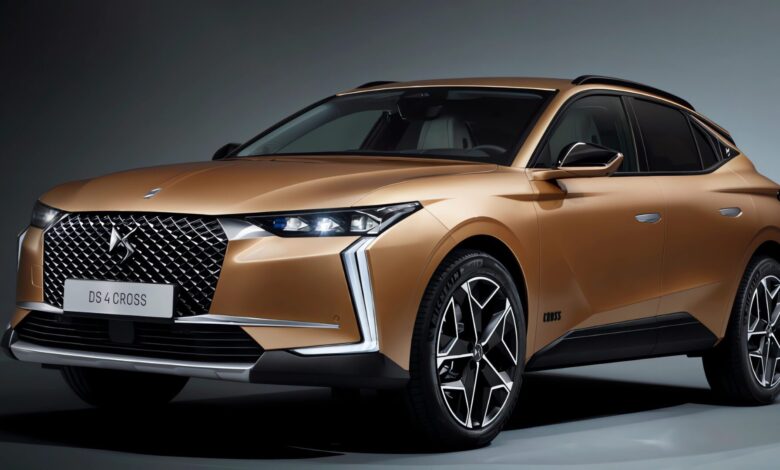
“The Citroen luxury brand’s sub-brand may have come a long way with the DS 4. It’s a truly luxurious family hatchback with SUV-level utility and a great interior. There’s also a DS 4 to suit every car consumer, with petrol, diesel and plug-in.” Hybrid engines are available, as well as a choice of Sports or Luxury trim levels.
The premium hatchback market contains many excellent cars that, because of their broad appeal, are no longer the status symbols they once were. You won’t cross out the Audi A3, BMW 1 Series, or Mercedes-Benz A-Class from your work vehicle list, but none of them will be a conversation starter when you arrive at a customer meeting in one. As you’ll see in our full review of the DS 4, we think this stylish French underdog is a surprisingly attractive option.
DS Automotive was spun off from its parent company, Citroen, a few years ago. It’s still small enough that you won’t see DS-branded cars filling every highway, but with each new model release, the DS becomes a more realistic contender in the luxury segment.
The latest model is the DS 4. It competes with the cars shown above, as well as more popular models like the Volkswagen Golf and (internal competitor) the Peugeot 308. It also has SUV-like styling so that you can consider it alongside the Mercedes GLA or BMW X2.
The DS 4 lineup may seem confusing at first, but spend a little time with the default manual, and you’ll quickly understand it. The DS 4 Bastille+ is the base model, however, it comes standard with 17-inch alloy wheels, a modern 10-inch media system and LED headlights.
If you want a sportier DS 4, there are Performance Line and Performance Line+ variants, while the DS 4 Cross Trocadero and Cross Rivoli look a little tougher (with things like black roof rails, skid plates, and door sill guards). Although DS 4 Cross models aim for an off-road look, they don’t get increased ride height (or any off-road capability).
We expect to see more DS 4 models with powerful 1.2- and 1.6-litre Puretech fuel engines, as well as a diesel car called the BlueHDi 130. The most popular DS 4 model on the market is the plug-in hybrid (DS 4 E-Tense), which combines a 1.6L engine with a large battery to provide up to 38 miles of range. In 2024, a pure electric car is expected.
DS 4 is not fun to drive. It’s comfortable enough, however, that a sophisticated suspension system (on some versions) can use a front camera to locate potholes and smooth out any bumps in the road ahead. In theory, yes.
When you simply want to relax, the DS 4 shines. Its interior is gorgeous, with high-quality materials and stress-relieving technology. All versions of the DS 4 have an automatic transmission, which frees up space on the centre console for a small digital touch screen. This is conveniently located and can control the main 10-inch infotainment screen. It’s a goofy setup, but it works effectively.
In terms of interior space, the DS 4’s relatively large exterior proportions mean it feels less cramped than, say, the BMW 1 Series. There’s a good-sized shoe, and even the hybrid E-Tense (with its large battery pack) doesn’t skimp on practicality.
Costs start at about £25,000, which is cheaper than a similarly equipped VW Golf. Higher-end versions also undercut rivals; however, private purchasers may find the £36,600 price tag of the plug-in hybrid DS 4 E-Tense difficult to justify. The most expensive versions cost over £40,000, which is a lot of money, and you’ll be hit with premium vehicle tax for five years.
Overall, we think the DS 4 provides excellent value for money. It gets things done significantly differently than competitors, and it’s not just a polished version of similar hatchbacks like the Peugeot 308 and Vauxhall Astra.
Positives
- Left-field alternative to a Volkswagen Golf
- The Interior is remarkably well-finished
- Available in either petrol, diesel or plug-in hybrid power.
cons
- It’s still a bold choice.
- Ride quality could be improved (especially with the larger alloy wheels).
- The model lineup is a bit confusing.
Is DS4 Right For You?
If you’re looking for something more unique, the DS 4 fits the bill. However, it’s less of a compromise than previous DS models, and its interior design is truly one of the most beautiful in its class. Its impressive usability means you can use it as a primary family vehicle, and its range of powerful engines ensures it won’t break the bank for business.
What DS-4 Make and Engine Should I Get?
The DS 4 E-Tense plug-in hybrid isn’t cheap, but we like it. It has a very usable electric range of 38 miles, and the versatility offered by electric driving complements the DS 4’s calm mood nicely. Personal choice determines which trim level you choose, but a beautiful Trocadero or Rivoli would check a lot of boxes for us.
What other vehicles are similar to the DS 4?
The DS 4 positions itself as an out-of-the-box replacement for premium German hatchbacks like the BMW 1 Series, Mercedes A-Class, and Audi A3. You might also want to look at slightly more traditional options, such as the Mazda 3, VW Golf, and SEAT Leon. With its massive, SUV-like styling, it could be mistaken for a BMW X2, Volvo XC60, or Range Rover Evoque.
DS 4 interior design and comfort
“If you’re sitting in a DS 4, you’re unlikely to want to buy anything else. The interior is an elegant affair, meant to stand out from competitors like the VW Golf. If your friends and family think you’ve lost your car by buying such a niche model, They will understand as soon as they see the cabin.”
It’s easy to get comfortable, thanks to sturdy chairs that allow for plenty of adjustabilities. You don’t sit as high (if that’s what you’re after, consider an SUV instead), but you still get a good perspective of the road ahead.
LED ambient interior lighting, which is included on all DS 4 models except for the entry-level Bastille+, is a nice touch. This is customizable, which contributes to the feeling of serenity in the DS 4’s cabin (so the brand says; we think it looks pretty cool).
You also get an air filtration system to protect you and your family from any pollutants in the air outside. Some models also come with acoustic side glass to reduce the amount of outside noise that disturbs your zen.
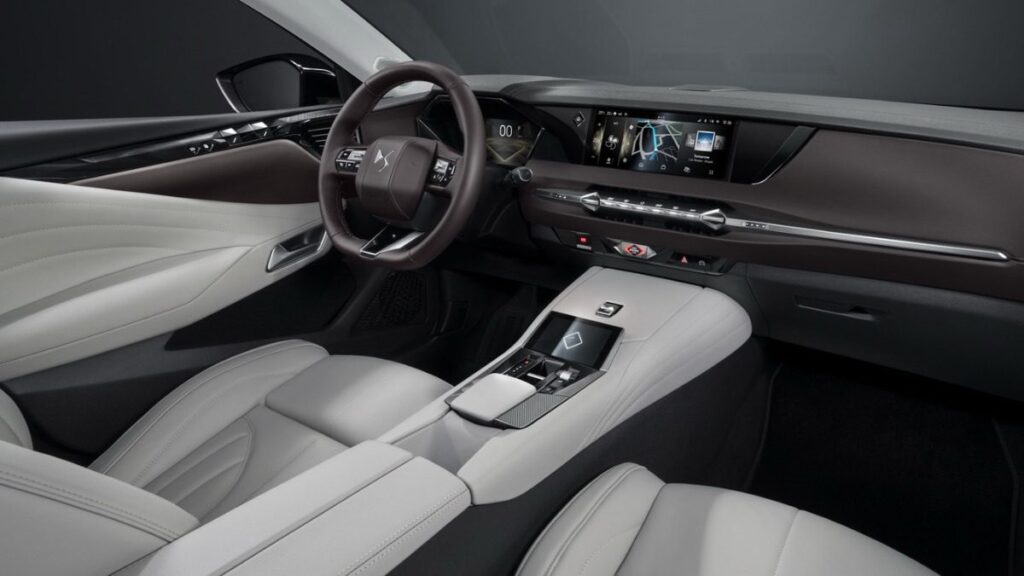
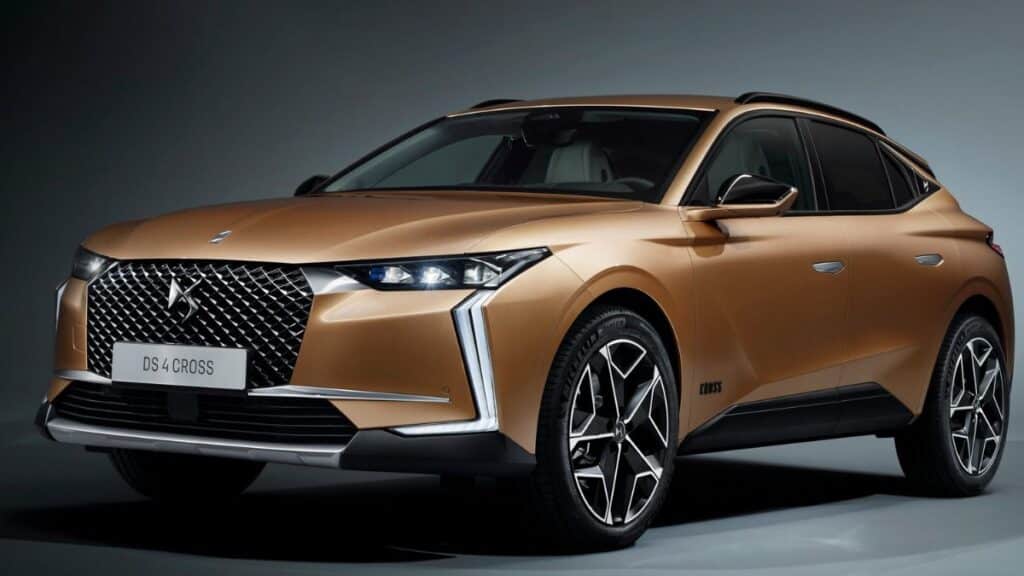

Finishing and quality
The interior of the DS4 is beautiful. From the hand-stitched leather steering wheel to the sumptuous console, it feels as luxurious as premium competitors like the Mercedes A-Class.
We love the brown watch leather on the DS 4 Rivoli and Cross Rivoli variants, but at £2,450 it’s certainly not an option box many buyers check. The majority of vehicles come with cloth seats as standard, while Performance Line versions include Alcantara-trimmed seats. Rivoli and Cross Rivoli come standard with black leather seats.
With the DS 4, there’s a touchscreen, USB, navigation, and stereo.
The DS 4 comes with a premium 10-inch media system. It is easier to use than many competing infotainment systems (have you tried the VW Group system recently…?) with quick responses and customizable menu layouts (a bit like a smartphone).
While touch screens can be annoying to use on the go, the DS 4 provides a solution. A second, smaller touchscreen is located at the bottom of the centre console. This is easily accessible and can be used to control the basic navigation system. It’s not as simple as a rotary controller (or, God forbid, real buttons), but it feels more secure than others we’ve tested.
Apple CarPlay and Android Auto are available on all cars, but you can choose not to charge the phone wirelessly. All versions of the DS 4 have two USB-C ports on the front, and most (except the DS 4 Bastille+) have two on the back.
Space and practicality: DS 4 boot space
In terms of outward size, the DS 4 is virtually an SUV (it measures 4400mm long, 1830mm wide, and 1470mm high). It is excellent news in terms of internal space.
The boot holds up to 430 litres of baggage, which is more than a BMW 1 Series, Mercedes A-Class, or Audi A3. With the DS 4 E-Tense, this decreases to 390 litres (those hybrid batteries have to go someplace), but it’s still a sizable cargo bay.
Teenagers in the rear will have little cause to complain if you intend to use the DS 4 as your primary family vehicle (unless you attempt to shoehorn one in the middle seat; it’s best reserved for infrequent usage). There’s plenty of headroom and legroom, and there are Isofix hooks on the outside rear seats (as well as the front passenger seat) to aid in the installation of child seats.
The DS 4 has lots of space in the front, with plenty of flexibility in the seats and enough headroom for even the tallest passengers. There are also many useful storage areas, including a pair of cupholders and a deep cubby beneath the armrest.
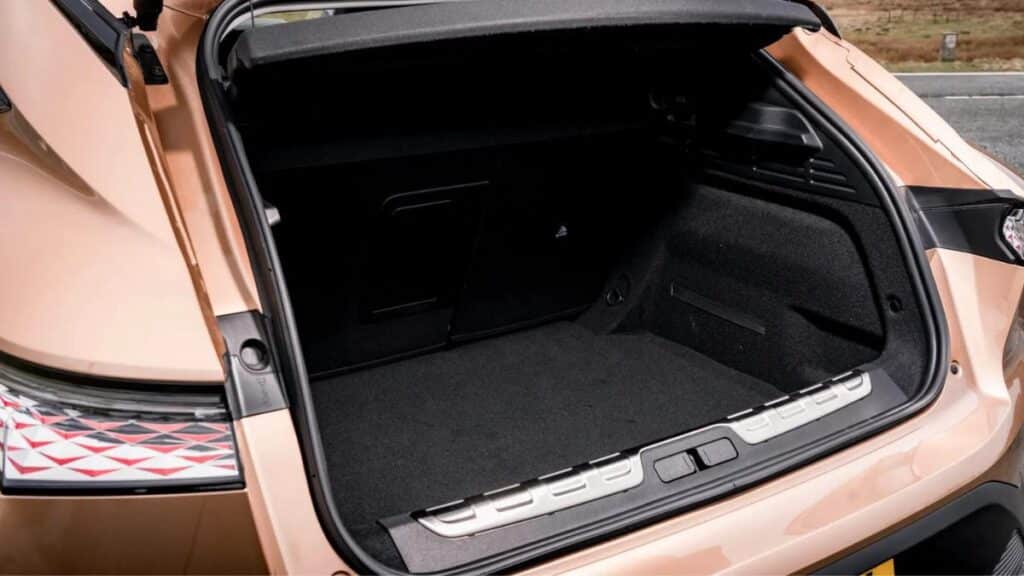
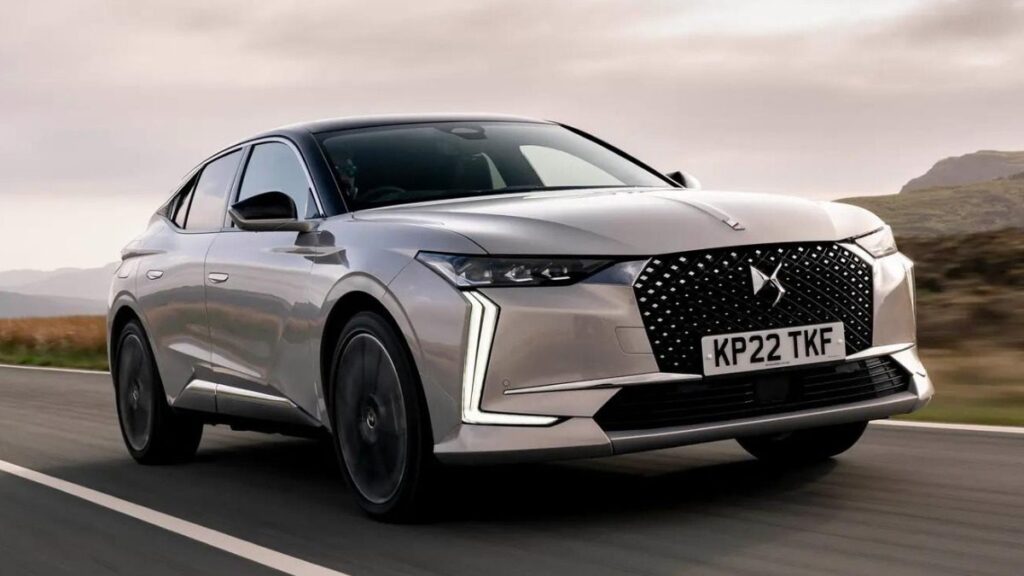
Handling and ride quality: What is the DS 4 like to drive?
“If you get a DS 4 with the innovative Active Scan technology, it comes with a camera on the windshield that monitors the road ahead for defects. If it finds a pothole, it helps the adaptive suspension, which makes the ride less bumpy inside.That’s the type of technology found exclusively on the most costly vehicles, such as the Mercedes S-Class.”
Whether you choose the DS 4 with or without the optional adaptive suspension, it may be a little stiffer than you’d expect from a nice French vehicle. Why can’t DS make its cars as soft and springy as its more popular sibling Citroen? The reason is obvious: It’s going after German rivals, who all value sportiness above comfort. Huge alloy wheels don’t help (we tested the DS 4 on massive 20 inches), and neither do the hybrid batteries on DS 4 E-Tense variants.
Don’t expect the DS 4 to be as agile as a BMW 1 Series or X2. Its steering is too light to urge you to keep going, and it has the same amount of lean in the bends as a slightly unstable Mercedes GLA.
There is no four-wheel-drive DS 4 (even the tough Cross variants and the DS 4 E-Tense plug-in hybrid transfer power to the front wheels), but that’s no big deal. Driving feels comfortable and safe, and there’s lots of technology to keep you safe (more on that in the safety section below). It’s also simple to navigate through city streets; this isn’t a very large vehicle, and you don’t get the lofty driving position you would anticipate from its SUV-like look.
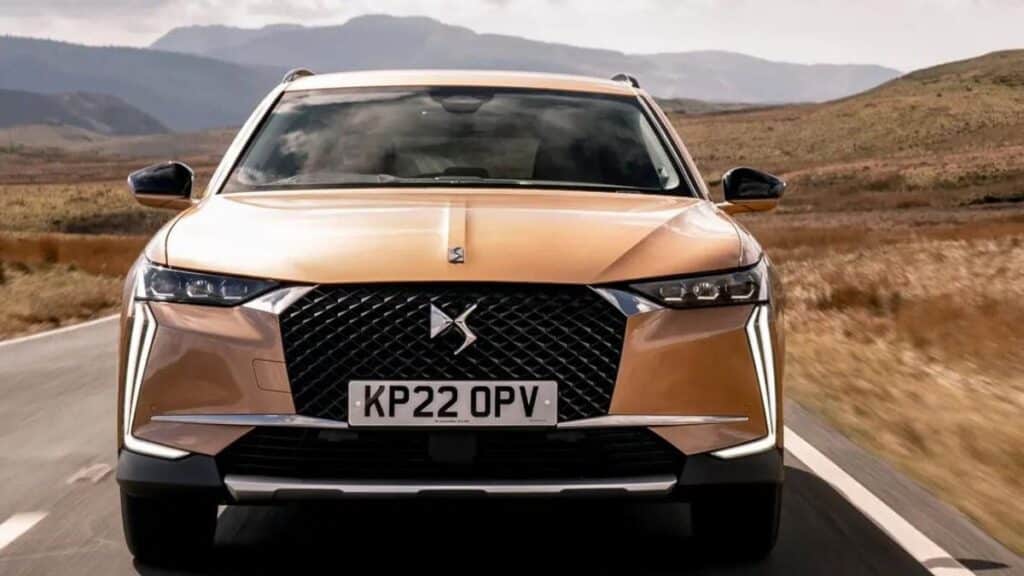
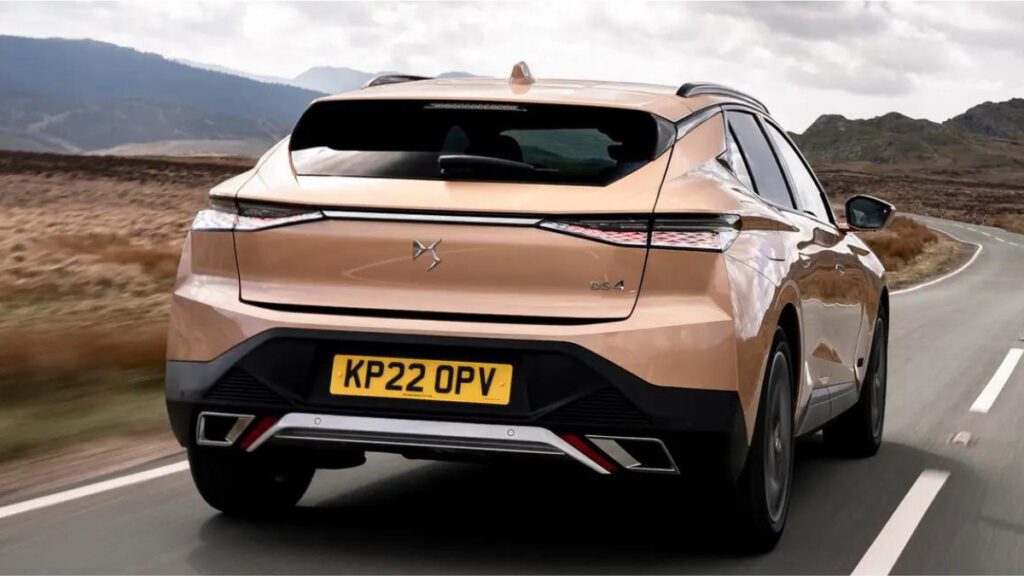
What engines and gearboxes are available in the DS 4?
The DS 4 lineup begins with the Puretech 130, a tiny 1.2-litre petrol engine. This generates 130 PS, as the name says, which isn’t a lot of power for a vehicle this small but should be adequate to keep up with traffic. We have yet to test a DS 4 with this engine; therefore, 0-62mph acceleration estimates for the entry-level motor are unknown.
If you want a more powerful petrol engine, a 1.6-litre engine with 180 PS or 225 PS is also available. The former will get the DS 4 to 62mph in 8.0 seconds flat, while the latter will take 7.9 seconds longer. The DS 4’s petrol engines are all combined with an eight-speed automatic transmission.
There’s also a diesel engine, the BlueHDi 130, which comes with an eight-speed automatic transmission. The 0-62mph sprint takes 10.9 seconds, but with 300 Nm of torque, increasing speed should be rather straightforward.
The plug-in hybrid DS 4 E-Tense is our favourite model. This vehicle combines a 1.6-litre gasoline engine with a 12.4 kWh lithium-ion battery and an electric motor, enabling it to easily convert between gasoline and electric power. At 225 horsepower, it is also the fastest, reaching 62 mph in 7.7 seconds.
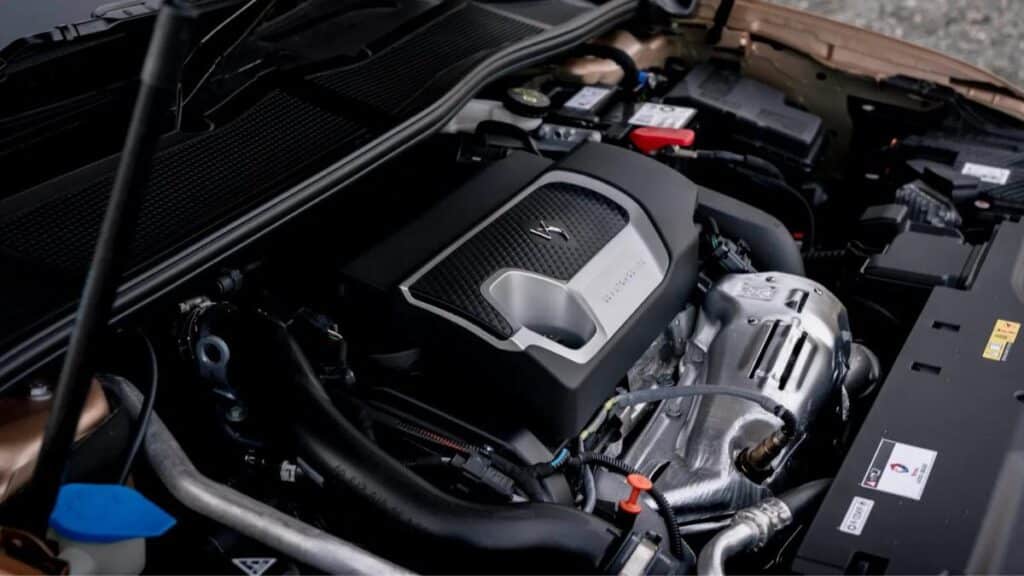

Noise levels and refinement
Until an electric DS 4 is available, the most refined version is the E-Tense plug-in hybrid. When completely charged, it may behave like a pure-electric car, dashing about without the petrol engine kicking in. When the combustion engine is needed, it will start up without a hitch.
We have yet to test the DS 4 with a diesel engine, but we anticipate it to be a touch louder than the petrol and diesel variants. Yet that is the cost of being economical.
Aside from the engines, the DS 4 is as refined as a high-end hatchback should be. Wind noise is negligible, but there is some road noise, especially if you have 20-inch alloy wheels.
Safety features: How safe is the DS 4?
The DS 4 has semi-autonomous driving’ characteristics, according to the company. They are bundled together as DS Driving Assist, which includes adaptive cruise control (with the ability to stop and start completely in heavy traffic) and lane placement. It won’t drive itself, but it should alleviate the burden of prolonged excursions. It should be noted that the DS Drive Assist is only available as an option on the DS 4 Rivoli and Cross Rivoli trim levels, as well as the La Premiere introduction model.
A slew of additional driver-assistance features is standard across the board. This includes a driver attention system (which informs you if you are not paying enough attention to the road), an emergency braking system (which can apply the brakes if a probable accident is detected), and speed limit recognition. All versions have a reversing camera, except the DS 4 La Premiere, which has a 360-degree camera system.
There are the standard airbags, as well as Isofix child seat mounting points on the front passenger seat and outer rear seats. Euro NCAP gave the DS 4 four stars when it was crash-tested in 2022, or five stars when equipped with the optional Safety Pack.

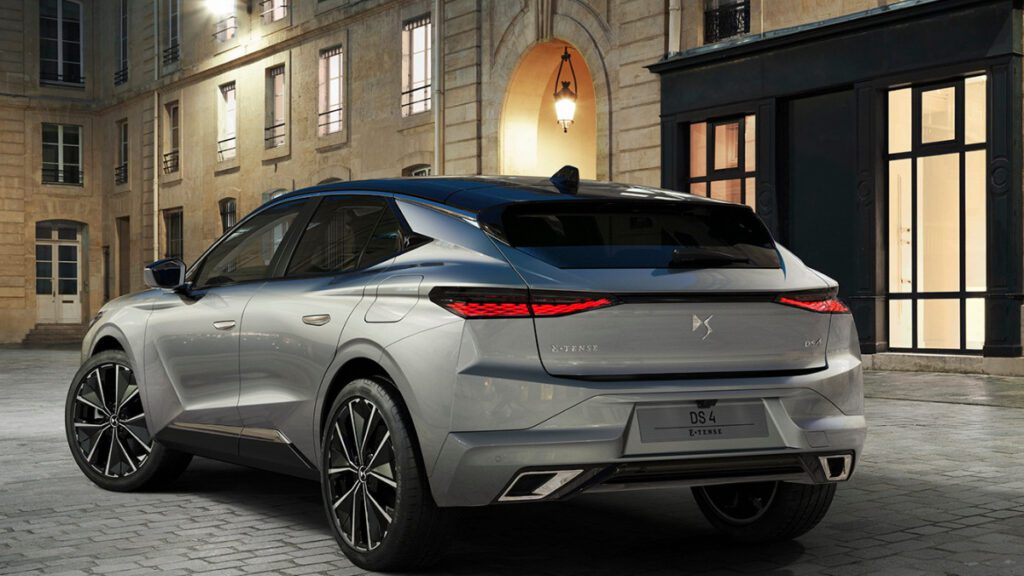
MPG and fuel costs: How much does it cost to operate a DS 4?
“Like with other plug-in hybrids, the DS 4 E-232.3 mpg Tense’s fuel efficiency statistic should be taken with a grain of salt. More crucial is its 38-mile electric range, which means you may be able to cover the commute or school run without having to start the gasoline engine.”
If you make a lot of short trips and can charge a vehicle at home, the plug-in hybrid DS 4 E-Tense might be a great option. If you can’t (or don’t want to) charge your automobile, we propose one of the more traditional gasoline choices.
In WLTP fuel efficiency testing, the Puretech 130 achieves up to 48.6 mpg, while the Puretech 180 achieves 43.9 mpg. Remarkably, considering the available power, the 1.6-litre Puretech 225 achieves up to 43.7 mpg—a little improvement over the Puretech 180.
Even though diesel power is no longer popular, the DS 4 BlueHDi should be the vehicle of choice for high-mileage highway travellers. Officially, it gets up to 61.2 mpg.
How reliable is the DS 4?
The DS 4 is still too new to know how dependable it will be; however, it shares mechanicals with a broad variety of Stellantis models. It should be excellent news for reliability since nothing about the DS 4 should be exceptionally costly or difficult to repair.
Costs and insurance groups
We propose a DS 4 with the Puretech 130 petrol engine if you want to save money on insurance. This comes within insurance categories 19E or 20E, depending on trim level. The DS 4 Puretech 180 is classified as insurance group 29E, whereas the DS 4 BlueHDi diesel is classified as insurance group 21E. Insurance companies have yet to be disclosed for the DS 4 E-Tense plug-in hybrid.
In actuality, we’d anticipate the DS 4 to cost around the same to insure as a VW Golf. Nevertheless, we suggest comparing insurance quotes.
How much should you pay for a pre-owned DS 4?
“The DS 4 E-Tense plug-in hybrid is likely the most wanted model, but it is also the most costly. One of them will set you back over £36,000, with high-spec trim levels costing over £40,000. Ouch.”
The DS 4 Bastille+ with the Puretech 130 petrol engine is the most inexpensive way to purchase a DS 4. This begins at somewhat more than £25,000. Meanwhile, the PureTech 225 Performance Line+ begins at roughly £35,000.
Look for a pre-registered or nearly-new DS 4 on HeyCar to save money (and avoid the waiting list). We haven’t seen many copies of the new DS 4 on the secondhand market yet, but it won’t be long until ex-demonstrator units arrive.
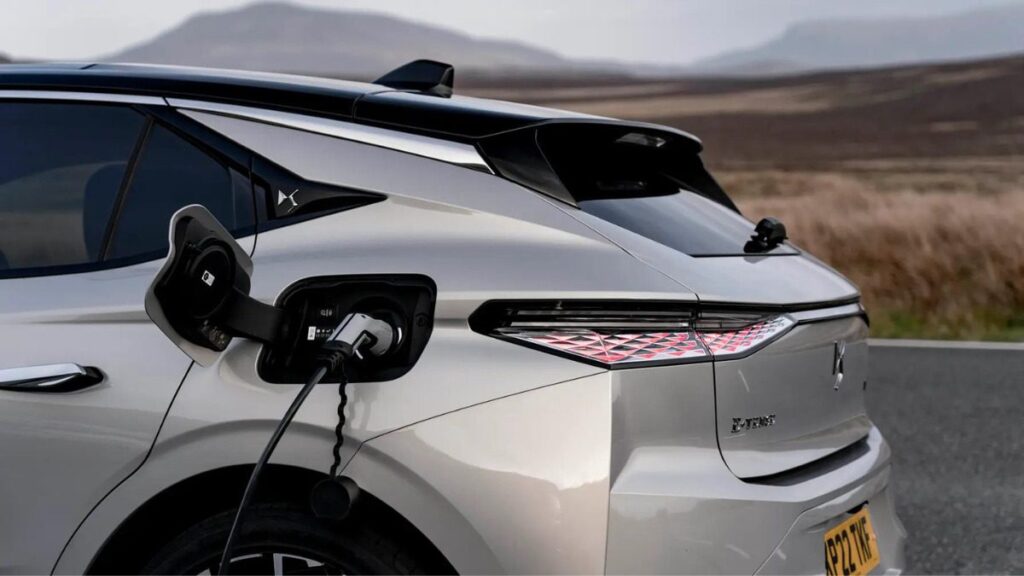

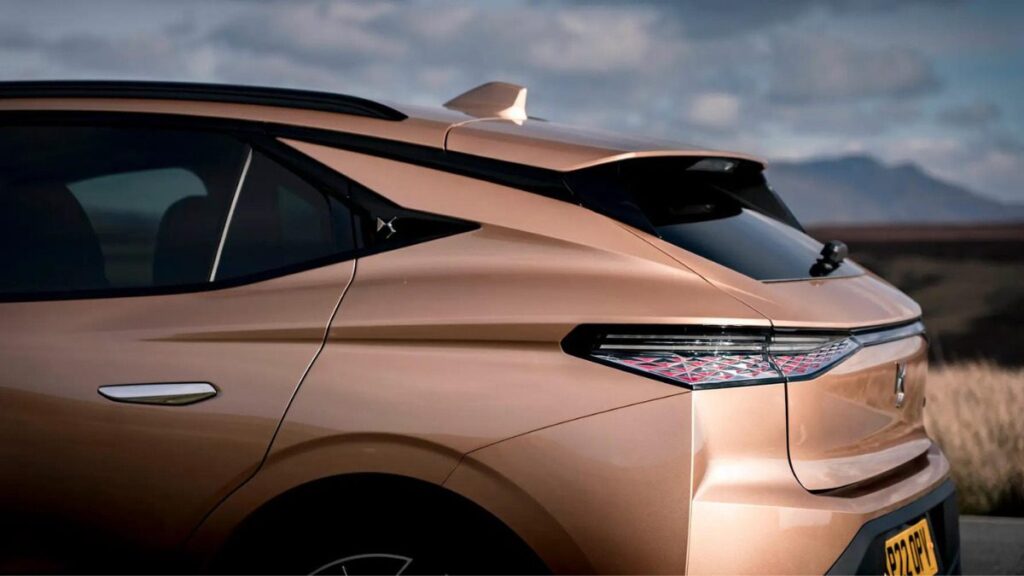
Trim levels and standard features
The trim levels of the DS 4 may seem perplexing at first, but stick with us and we’ll walk you through them. There are three main models: the DS 4, the somewhat sportier DS 4 Performance Line, and the more SUV-like DS 4 Cross. Each of them is available in a variety of variations.
The Bastille+ is the entry-level DS 4. 17-inch alloy wheels, LED headlights, and a black front grille are standard features. There’s a front central armrest, a leather steering wheel, and fabric seats inside. A 10-inch touchscreen system (with Apple CarPlay and Android Auto) and a seven-inch digital gauge cluster are supplied for infotainment.
The DS 4 Trocadero raises the bar with 19-inch alloy wheels and a chrome front grille. Inside, there are cloth seats with embossed designs, a head-up display, and the DS Iris system, which combines 3D navigation with speech recognition. Keyless entry and start, front parking sensors, the DS Connect Box (an emergency and support system), and a reversing camera are among the other technological features.
The DS 4 Rivoli is the model with the most standard features, including black leather seats, matrix LED headlights, scrolling rear indicators, and DS Driving Assist (with adaptive cruise control and lane positioning assist). Darkly tinted rear windows and laminated acoustic-insulated glazing are also standard.
The DS 4 Performance Line starts with the DS 4 Bastille+ and adds black 19-inch alloy wheels and gloss black exterior accents (including the grille, DS wings, and window surrounds). The inside is upholstered in black Alcantara, with front parking sensors and a rear-view camera as tech highlights.
The DS4 Performance Line+ has the DS Iris navigation system, a larger head-up display, and the DS Connect Box. Backseat passengers have a rear armrest as well as tinted rear windows. Adaptive cruise control and an advanced emergency braking system are standard.
For a more rugged look, the DS 4 Cross Trocadero has black roof bars, black door sill guards, black front and rear skid plates, and black front and rear bumpers. It also has 19-inch alloy wheels. Tungsten diamond cloth covers the seats, while tech features include the DS Iris navigation system, front parking sensors, and a reversing camera.
The DS 4 Cross Rivoli has black leather seats, DS Matrix headlamps, scrolling rear indicators, and a semi-autonomous driving package called DS Drive Assist. A rear cross-traffic warning system and darkly tinted rear windows are also included.




